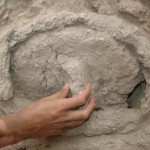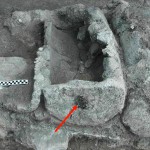Biblical Apiary
The honey mentioned in the Bible was indeed produced by cultivated bees: archeologists found in Israel traces of an old apiary, which existed around three thousand years ago. Interestingly enough, the bees that lived there were brought from Turkey.
Israel is mentioned in the Bible as the “land of milk and honey.” Whereas with the milk everything is quite clear (cows from the days of old supplied mankind with this drink), no one could find signs of bee-keeping and making honey in the Holy land two or three thousand ears ago. Due to this fact, the scientists supposed that in the text of the Bible there was not a reference to the actual honey, but to the nectar of a date palm or some other fruit.
But three years ago, archeologists found the remains of the most ancient apiary known at the present time.
The excavations were carried out in the Jordan RiverValley, near the ancient city Tel Rehov. It is one of the largest cities of Biblical times on he territory of Israel, which had its heyday in XII—IX centuries BC.
Guy Bloch from the University in Jerusalem got interested in studying the find together with his colleagues from other countries. They did the analysis of the discoveries, in particular, they interpreted preserved texts and writings, which showed that beekeeping existed in the Middle East three thousand years ago. There is a corresponding article in the new issue of the Proceedings of the National Academy of Science that informs about this.
At this ancient apiary there were about thirty cylinders of baked clay – beehives. Their size was one meter high and close to fifty centimeters in diameter. On one side of the beehive there was made a beehive entrance for the bees, on the opposite side there was a lid. The beehives were kept in the yard of an architectural construction which existed in X-IXBC, which matches the times of the reign of David and Solomon.
Because of the discovery in Tel Rehov, the scientists found out the reason why nothing was known about the beekeeping three thousand years ago.
The clay of which the beehives were made was very fragile in solid state and it simply crumbled in a short time. The most ancient apiaries known before this find dated from 200 AD and consisted of beehives woven of the vine branches.
As for these beehives, they were preserved due to an accident – a fire, that destroyed the city, but made the clay of beehives “baked” under the dirt in such a way that it survived till our days. The scientists believe that in the central part of the city there were 100-200 beehives, in which 1.5-2 million bees lived.
The scientists point out that the location of beehives within the city built-up is surprising, and believe that at the moment when honey was gathered, the bees could be quite aggressive.
As they studied the remains of bees found in the most ancient beehives, entomologists from Germany and Brazil established that the bees that had been kept in them are different from modern bees living on the territory of Israel (Apis mellifera syriaca). Such bees usually live in a colder and more humid climate than the Israel’s.
The scientists surmised, that they were brought out of Turkey. “Our work sheds new light on the economy of the Biblical period,” said archeologist Amihai Azar to The Los Angeles Times.
Material is taken from the web resource: http://eikenclub.ru


